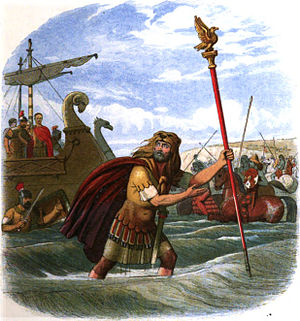In 1724 Daniel Defoe wrote of Torbay:
“In the Bottom of this Bay is a beautiful, well-built, and finely-situated House, call’d Torr-Abbey, formerly a Religious House; but now the Inheritance of — Cary, Esq. Vespasian is said to have landed here, when he came to attack Arviragus, King of Britain.”
So, did a Roman army land on Torre Abbey Sands in order to launch an assault on a British army?
This is what we know.
The quotation comes from Daniel Defoe’s book (deep breath), ‘A tour thro’ the whole island of Great Britain: Divided into circuits or journeys. Giving a particular and entertaining account of whatever is curious, and worth observation; By a gentleman. Part 1′
We know Daniel Defoe (c. 1660-1731) mainly as the author of ‘Robinson Crusoe’ but he was a prolific and versatile writer, producing more than three hundred works. He wrote many political tracts leading him into conflict with the authorities, and to spending time in prison. Pictured below is Daniel in the pillory.
Other than ‘Crusoe’, his most popular and financially successful work was the Tour series. These are accounts of his travels, first published in three volumes between 1724 and 1727. Daniel did not necessarily travel to all the locations described, and relied on his past journeys during his time as a merchant or while working for the politician Robert Harley.
He also based his narratives on other travel and historical literature.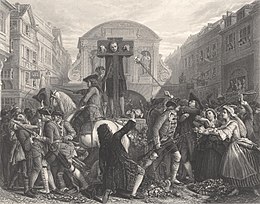
One of these books was Geoffrey of Monmouth’s ‘Historia regum Britanniae’ (The History of the Kings of Britain), written around 1136. However, the Historia is very unreliable as a history book. It states, for example, that, “The island of Britain derives its name from Brutus, a Roman consul who conquered Spain”. It didn’t. In this pseudo-history Brutus travels to an island possessed by giants to famously pronounce, “Here I stand and here I rest, and this good town shall be called Totnes”. Amongst the original Devonians was “One detestable monster named Gogmagog, in stature twelve cubits” – a cubit is around 18 inches, so we have an 18 feet tall local chap.
Bearing in mind the unreliability of the ‘Historia’, Geoffrey introduces us to a British king called Arviragus who is the contemporary of the Roman emperor Claudius (41–54 AD). Arviragus rebels against Rome, forcing the Roman Emperor Claudius to send an army led by Vespasian to Britain. The Roman’s landing site is said to be the port of Totnes from which he marches to Exeter to besiege the city. Arvirargus meets him in battle there and the fight is a stalemate. Peace is then declared between the two foes. Vespasian returns to Rome and Arvirargus rules for many years. At the end of a peaceful reign the king dies and is buried in Gloucester.
There are a number of problems here. Did Totnes and Torbay get confused in the telling? And was the British King a real person? 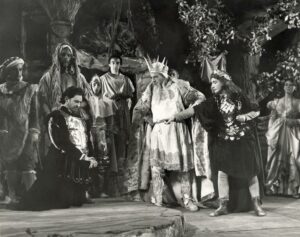
Arviragus s only known from a cryptic reference in a satirical poem by Juvenal, in which a giant turbot presented to the Roman emperor Domitian (81–96 AD) is said to be an omen that “you will capture some king, or Arviragus will fall from his British chariot-pole”. Arvirargus does, however, turn up as a character in Shakespeare’s Cymbeline which was based on the story of the historical British king Cunobeline, originally recorded in the ‘Historia’. The Bard likely found the story in the 1587 edition of Raphael Holinshed’s ‘Chronicles’.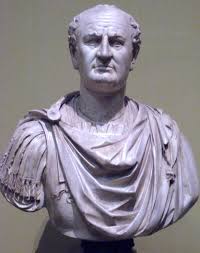
Certainly, Titus Flavius Vespasianus, known as Vespasian, is real. He commanded the second legion in the invasion of Britain in 43 AD and conquered the south west of England. The Roman historian Suetonius said of Vespasian: “He reduced to subjection two powerful nations, more than twenty towns, and the island of Vectis”– Vectis is the Isle of Wight.
But no other historian mentions any successful resistance to Roman invasion or a long-term truce between Britons and Romans. Indeed, the Romans had a very firm grip on Devon with upwards of thirty forts known, including the Legio II Augusta legionary fortress at Exeter. The Romans just didn’t go in for equal partnerships with barbarians. It had to be their way. 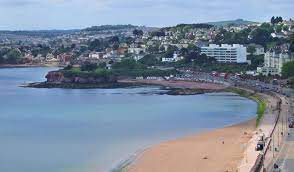
On the other hand, Geoffrey’s legendary Arviragus appears to correspond to the historical Caratacus who did lead the initial resistance to the Roman invasion for nearly a decade. However, Caratacus was based around Camulodunon, modern Colchester, the capital of the Trinovantes and later the Catuvellauni peoples. Devon was Dumnonii territory.
Accordingly, both Arviragus and the story of Rome’s Torquay D-day seem to be a thousand year old myth…


